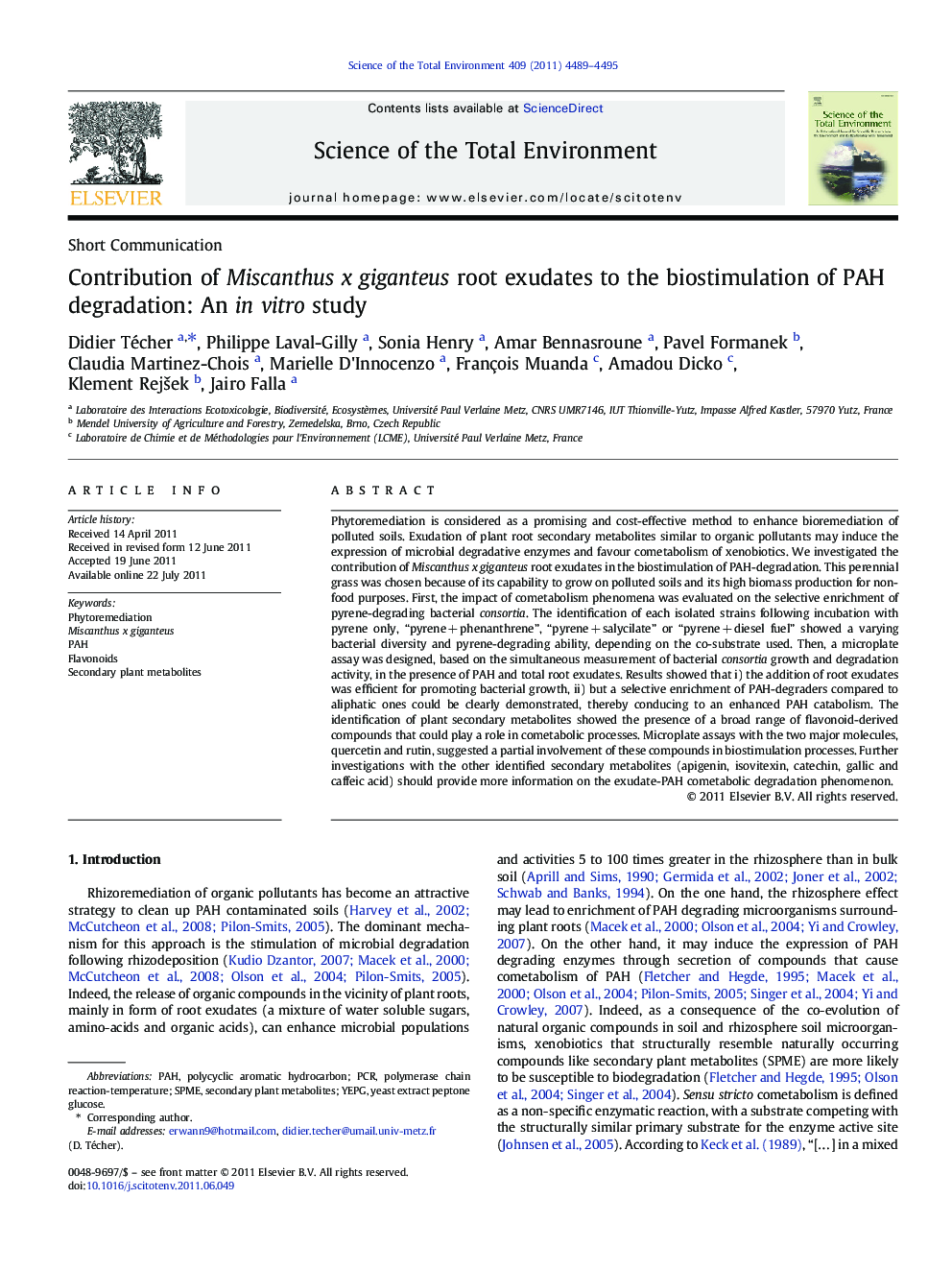| کد مقاله | کد نشریه | سال انتشار | مقاله انگلیسی | نسخه تمام متن |
|---|---|---|---|---|
| 4429943 | 1619842 | 2011 | 7 صفحه PDF | دانلود رایگان |

Phytoremediation is considered as a promising and cost-effective method to enhance bioremediation of polluted soils. Exudation of plant root secondary metabolites similar to organic pollutants may induce the expression of microbial degradative enzymes and favour cometabolism of xenobiotics. We investigated the contribution of Miscanthus x giganteus root exudates in the biostimulation of PAH-degradation. This perennial grass was chosen because of its capability to grow on polluted soils and its high biomass production for non-food purposes. First, the impact of cometabolism phenomena was evaluated on the selective enrichment of pyrene-degrading bacterial consortia. The identification of each isolated strains following incubation with pyrene only, “pyrene + phenanthrene”, “pyrene + salycilate” or “pyrene + diesel fuel” showed a varying bacterial diversity and pyrene-degrading ability, depending on the co-substrate used. Then, a microplate assay was designed, based on the simultaneous measurement of bacterial consortia growth and degradation activity, in the presence of PAH and total root exudates. Results showed that i) the addition of root exudates was efficient for promoting bacterial growth, ii) but a selective enrichment of PAH-degraders compared to aliphatic ones could be clearly demonstrated, thereby conducing to an enhanced PAH catabolism. The identification of plant secondary metabolites showed the presence of a broad range of flavonoid-derived compounds that could play a role in cometabolic processes. Microplate assays with the two major molecules, quercetin and rutin, suggested a partial involvement of these compounds in biostimulation processes. Further investigations with the other identified secondary metabolites (apigenin, isovitexin, catechin, gallic and caffeic acid) should provide more information on the exudate-PAH cometabolic degradation phenomenon.
► Addition of Miscanthus x giganteus root exudates selectively promotes growth of PAH-degrading bacterial consortia
► Biostimulation of degradation of polycyclic compounds including PAH is observed in presence of exudates
► Quercetine, rutine, apigenine, isovitexine, gallic acid were identified as secondary plant metabolites in exudates
► Quercetine and rutine may be involved in bacterial biostimulation processes
Journal: Science of The Total Environment - Volume 409, Issue 20, 15 September 2011, Pages 4489–4495